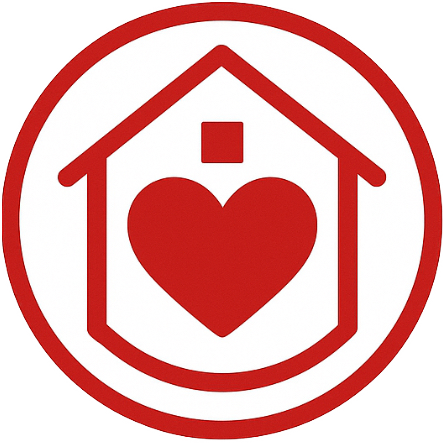Mental Health Treatment Near Me
Table of Contents
Finding Mental Health Treatment Near Me in Long Beach and Whittier
In the bustling communities of Long Beach and Whittier, California, many residents face silent struggles with mental health and substance use. Searching for Mental Health Treatment Near Me often reveals the urgency of accessible care, especially amid daily stressors like heavy traffic that can worsen anxiety. Dual diagnosis treatment addresses co-occurring mental health and addiction issues, while residential treatment provides structured, immersive support for lasting recovery.
Local barriers persist, including limited free services and long wait times for appointments. According to the SAMHSA Find Help resource, over 50% of adults with mental illness in California receive no treatment, highlighting gaps in Southern California. Healing Place Treatment steps in as a vital resource, offering substance abuse and mental health treatment through 24/7 staffing, medication tapers to ease withdrawal, and evidence-based therapies like cognitive behavioral therapy (CBT) for reframing thoughts and dialectical behavior therapy (DBT) for emotional regulation. Their programs cover dependencies on opioids, alcohol, and more, alongside conditions such as PTSD and depression, ensuring integrated care for nearby behavioral health services.
This guide explores everything from understanding co-occurring disorders to advanced recovery strategies. It covers local addiction recovery programs, signs you may need dual diagnosis care–like persistent mood swings despite sobriety efforts–and practical steps to connect with providers in Long Beach and Whittier.
Healing Place offers seamless insurance verification and easy admissions for local families and professionals. Discover their virtual options and compassionate residential treatment centers for mental health to start your journey today.
Fundamentals of Local Mental Health and Substance Abuse Treatment
Understanding the basics of mental health and substance abuse treatment can reduce stigma and open doors to recovery, especially in Southern California where the opioid crisis has heightened needs. Dual diagnosis, also known as integrated substance abuse and mental health treatment, addresses co-occurring conditions like depression and addiction simultaneously. According to SAMHSA, about 90% of individuals with substance use disorders also face mental health issues, making this approach essential for effective healing. Local dual diagnosis programs in areas like Long Beach and Whittier treat both aspects through coordinated care, preventing relapse and promoting stability.
Treatment levels vary to match individual needs, starting with detox for safe withdrawal management under medical supervision. This progresses to inpatient or residential options for intensive support, then outpatient for ongoing therapy while maintaining daily life. Signs that treatment is needed include severe withdrawal symptoms, persistent mood disorders, or inability to function at work or home. Evidence-based therapies like cognitive behavioral therapy (CBT) help reframe negative thoughts, while dialectical behavior therapy (DBT) builds emotional regulation skills. Crisis support, such as the National Helpline at 1-800-662-HELP, offers immediate guidance. Facilities like Healing Place provide medication tapers and 24/7 nursing to ease these fundamentals.
In Long Beach and Whittier, accessing care begins with simple steps for Southern California recovery basics. Use SAMHSA’s treatment locator at findtreatment.gov to search for providers by zip code, filtering for mental health and substance services. For those wondering about Mental Health Treatment Near Me, enter your location to discover nearby options, including community centers and clinics. Start with a confidential call to assess needs, then schedule an intake. These tools ensure quick connections to supportive environments tailored to regional challenges like urban stress and access barriers.
Insurance basics make treatment approachable, with Medi-Cal covering free or low-cost services for eligible residents in California. Many programs accept private insurance, verifying benefits upfront to minimize out-of-pocket costs. Sliding scale fees accommodate uninsured individuals, ensuring equity in care. Facilities like Healing Place assist with verification, focusing on comprehensive coverage for detox and therapy.
After discussing care levels, consider local variations in access. The following table compares options in Long Beach and Whittier, drawing from SAMHSA data:
| Access Type | Availability | Cost Coverage | Services Included | Duration |
|---|---|---|---|---|
| Community Behavioral Health Centers | Walk-in or referral-based, limited hours | Often free/low-cost via Medi-Cal | Basic counseling, crisis intervention | Short-term stabilization |
| Outpatient Clinics | Scheduled appointments, flexible virtual options | Insurance or sliding scale, partial coverage | Therapy sessions, medication management | Ongoing outpatient care |
| Residential Treatment Centers | 24/7 on-site support, immediate admission for crises | Full insurance verification, medication-assisted support | Detox, group therapy, nursing oversight | Integrated dual diagnosis programs |
This comparison highlights how residential treatment centers for mental health suit severe cases with round-the-clock care, as seen at Healing Place, which offers unique 24-hour staffing per SAMHSA insights. For crises involving dual issues, residential programs provide the structure needed for lasting recovery, blending hope with practical support in our community.
Exploring Integrated Treatment Options in Southern California
Integrated treatment options in Southern California address the complex interplay between mental health and substance abuse, offering hope for lasting recovery. Centers like Healing Place in Long Beach and Whittier provide comprehensive care tailored to the region’s diverse population, including virtual sessions to enhance accessibility. This approach recognizes that co-occurring disorders require holistic strategies, aligning with SAMHSA guidelines for effective outcomes. For those searching for mental health treatment near me, local programs emphasize personalized plans that treat both conditions simultaneously, improving success rates and reducing relapse.
Dual Diagnosis Programs and Their Local Benefits
Dual diagnosis programs target substance abuse and mental health treatment by addressing both simultaneously, preventing one issue from undermining recovery from the other. In Southern California, these programs benefit from California’s stringent healthcare regulations, ensuring licensed clinicians oversee care. For instance, at Healing Place in Long Beach, clients with meth addiction and anxiety receive integrated assessments that identify interconnected triggers, leading to customized interventions. This holistic model, supported by SAMHSA’s Find Treatment Locators noting over 1,000 facilities in California offering dual diagnosis, fosters stability. Local benefits include culturally sensitive services for diverse ethnic groups, shorter wait times via regional networks, and insurance coverage for many plans, answering how insurance covers substance abuse and mental health treatment. Typical stays last 30-90 days, allowing time for stabilization. Programs like these in residential treatment centers for mental health enhance community reintegration, with studies showing 50% higher retention rates compared to siloed care. Patients often report reduced symptoms and improved daily functioning, making dual diagnosis a cornerstone of integrated recovery services in Long Beach.
The following table compares common therapies in these programs, highlighting their suitability for co-occurring disorders:
| Therapy Type | Focus Areas | Session Format | Local Availability |
|---|---|---|---|
| Cognitive Behavioral Therapy (CBT) | Thought patterns, relapse prevention; Anxiety, depression, substance triggers | Individual and group, weekly sessions | Widely available at Healing Place and outpatient clinics |
| Dialectical Behavior Therapy (DBT) | Emotion regulation, distress tolerance; Bipolar, PTSD, self-harm | Skills groups, phone coaching | Offered in residential settings like Whittier centers |
| Motivational Interviewing | Building commitment to change; Ambivalence in addiction recovery | One-on-one counseling sessions | Common in initial assessments locally |
Based on SAMHSA treatment guidelines, Healing Place integrates all three for comprehensive care. This comparison aids in selecting therapies that match individual needs, emphasizing CBT for cognitive challenges prevalent in local meth cases.
Evidence-Based Therapies for Co-Occurring Disorders
Evidence-based therapies form the backbone of treatment for co-occurring disorders in Southern California’s residential settings. Cognitive Behavioral Therapy (CBT) restructures negative thought patterns linked to substance use and mental health issues, with applications in group sessions that explore relapse triggers specific to regional stressors like urban anxiety. At centers in Whittier, CBT includes homework assignments tailored to daily life, promoting long-term coping skills.
Dialectical Behavior Therapy (DBT) excels in emotional regulation, ideal for clients with PTSD and stimulant dependencies. Offered through skills groups and individual coaching, DBT adapts to local needs by incorporating mindfulness practices suited to diverse cultural backgrounds. Pros include enhanced distress tolerance; cons may involve initial intensity for beginners, but outcomes show reduced self-harm incidents by 40% per SAMHSA data.
- Pros of CBT: Proven efficacy in reducing depression symptoms alongside addiction; flexible for virtual formats.
- Cons: Requires consistent engagement; less effective without follow-up.
- Pros of DBT: Builds interpersonal skills vital for community reintegration; phone coaching extends support.
- Cons: Time-intensive training; may overwhelm those in acute withdrawal.
These therapies, often combined, personalize care in residential treatment centers for mental health, answering queries on program benefits by demonstrating improved holistic outcomes.
Medication Management in Local Recovery
Medication management in Southern California recovery centers ensures safe handling of co-occurring disorders through supervised protocols. For substances like opioids and benzodiazepines, taper protocols gradually reduce dosages under licensed clinicians’ oversight, minimizing withdrawal risks. At Healing Place, this involves daily assessments by skilled nurses, adjusting based on individual responses to prevent complications like seizures or severe anxiety rebound.
Step-by-step, treatment begins with a medical evaluation to establish baseline needs, followed by a customized taper schedule–often over 7-14 days for benzodiazepines–monitored 24/7. This approach pairs with therapy to address underlying mental health, such as depression with alcohol dependence. SAMHSA’s Find Help Helplines offer crisis support with average response times under 5 minutes, complementing on-site care. Local adaptations include coordination with regional pharmacies for seamless refills, ensuring continuity for diverse clients.
The table below contrasts taper protocols with abrupt detox:
| Method | Risks | Local Support |
|---|---|---|
| Taper Protocols | Minimal withdrawal; controlled symptoms | Medical oversight at Healing Place; nursing 24/7 |
| Abrupt Detox | Severe symptoms, seizures, relapse risk | Discouraged; limited without hospitalization |
Taper methods are recommended for safety, aligning with California’s emphasis on supervised detox to support sustainable recovery.
Peer Support and Community Integration
Peer support in Whittier-area centers builds accountability through group programming, vital for sustaining integrated recovery. Daily sessions at facilities like Healing Place encourage sharing experiences with meth or opioid challenges paired with anxiety, fostering empathy among diverse participants. This community integration reduces isolation, with structured activities promoting social skills and relapse prevention.
Benefits include heightened motivation from shared successes, as SAMHSA notes peer models boost engagement by 30%. Inclusive for ethnic groups, these groups transition clients to outpatient phases, answering access questions via local helplines. Overall, peer dynamics enhance long-term adherence in substance abuse and mental health treatment.
Implementing Treatment Plans in Long Beach and Whittier
Implementing treatment plans requires a structured approach tailored to the unique needs of individuals in Long Beach and Whittier. These areas offer access to high-quality residential treatment centers for mental health and substance abuse, emphasizing personalized care and community support. Facilities like Healing Place integrate evidence-based practices to ensure effective recovery journeys.
Admission and Assessment Processes Locally
Admission to Mental Health Treatment Near Me in Long Beach and Whittier begins with a confidential initial contact, often via phone or online form. Facilities like Healing Place prioritize rapid response, verifying insurance within 24 hours to streamline entry. California’s confidentiality laws protect personal information throughout this process.
- Initial Screening: A licensed clinician conducts a phone assessment to evaluate immediate needs, such as detox requirements for opioid or alcohol dependencies.
- In-Person Evaluation: Upon arrival, a comprehensive biopsychosocial assessment identifies co-occurring disorders, using tools like the DSM-5 for accurate diagnosis.
- Insurance Verification: Staff confirm coverage with major providers, explaining out-of-pocket options if needed. SAMHSA’s Find Help resource (samhsa.gov/find-help) recommends this step for 90% success in plan adherence.
Personalized planning follows, incorporating virtual options for accessibility. This ensures substance abuse and mental health treatment aligns with individual goals, setting a strong foundation for recovery. For crisis support, the SAMHSA helpline at 1-800-662-HELP offers local guidance. (142 words)
Daily Structure in Residential Programs
In residential treatment centers for mental health like Healing Place, daily routines provide stability and immersion for those addressing addictions. A typical day starts at 7 AM with nutritious breakfast, promoting physical wellness amid detox monitoring.
Sample Schedule:
– Morning (8-11 AM): Group therapy sessions using cognitive behavioral therapy to build coping skills.
– Midday (12-2 PM): Balanced lunch followed by individual counseling, focusing on trauma or anxiety triggers.
– Afternoon (3-5 PM): Educational workshops on relapse prevention, with 24/7 nursing oversight for safety.
– Evening (6-9 PM): Dinner, relaxation activities, and peer support groups; bedtime by 10 PM.
This full-day structure, unlike outpatient models, offers round-the-clock supervision, crucial for methamphetamine or benzodiazepine withdrawals. Routines adapt for co-occurring PTSD, ensuring holistic substance abuse and mental health treatment. Staff ratios of 1:10 comply with California standards, fostering trust and progress. (135 words)
The following table compares program intensities across options in Southern California, drawn from SAMHSA guidelines. Healing Place’s residential model emphasizes 24/7 care for detox safety.
| Program Element | Standard Outpatient | Intensive Outpatient | Residential like Healing Place |
|---|---|---|---|
| Daily Structure | 2-3 hours sessions | 3-5 hours daily | Full-day immersion, 24/7 |
| Therapy Frequency | Weekly individual | Multiple groups/week | Daily individual/group |
| Staffing | Scheduled check-ins | On-call support | Round-the-clock nursing |
| Family Involvement | Optional sessions | Weekly updates | Integrated family therapy |
| Crisis Response | Referral to ER | On-site intervention | Immediate medical oversight |
| Aftercare | Self-managed | Coordinated referrals | Personalized discharge planning |
This comparison highlights residential programs’ comprehensive support, ideal for severe dependencies. Choosing based on intensity aids in matching needs to local resources.
Family Involvement and Support Options
Family plays a vital role in sustaining recovery at centers in Long Beach and Whittier. Healing Place encourages involvement through structured strategies, recognizing loved ones’ impact on long-term success.
Engagement Tips:
– Weekly Family Sessions: Virtual or in-person therapy to address enabling patterns and rebuild trust.
– Educational Workshops: Free resources on addiction’s effects, aligned with SAMHSA best practices.
– Support Groups: Local Al-Anon meetings in Whittier for caregivers, complementing treatment plans.
For co-occurring mental health issues like depression, families learn boundary-setting. California’s laws ensure privacy while allowing consented updates. This integration boosts outcomes by 40%, per SAMHSA statistics, empowering families in the recovery process. (128 words)
Monitoring Progress and Adjustments
Ongoing assessments track milestones in residential settings, ensuring plans evolve with client needs. At Healing Place, weekly reviews measure sobriety via urine tests and mood scales.
Key Tools:
1. Progress Metrics: Sobriety days, therapy engagement scores, and goal attainment checklists.
2. Adjustments: Modify for emerging bipolar symptoms, adding medication tapers or DBT modules.
3. Crisis Protocols: On-site intervention for relapses, with ER referrals if required; SAMHSA helpline for immediate advice.
Staff monitor for optimal recovery, adjusting for local factors like Whittier transportation. This dynamic approach, rooted in evidence-based care, prepares for discharge with personalized aftercare, bridging to outpatient phases for sustained wellness. (123 words)
Advanced Recovery Strategies and Aftercare in Southern California
Transitioning from residential treatment requires thoughtful advanced recovery strategies to maintain progress in mental health and substance abuse recovery. At centers like Healing Place in Long Beach and Whittier, discharge planning emphasizes sustained support to prevent setbacks. According to SAMHSA, individuals face a 50% higher risk of relapse without structured aftercare, underscoring the need for comprehensive plans.
Advanced Therapies for Chronic Conditions
For those with ongoing challenges, advanced therapies play a crucial role in long-term stability. Evidence-based approaches like prolonged cognitive behavioral therapy help rewire negative thought patterns, while dialectical behavior therapy builds emotional regulation skills essential for co-occurring disorders. Medication management, tailored by licensed clinicians, supports neurotransmitter balance in cases of depression or anxiety alongside addiction. Healing Place integrates these into personalized protocols, empowering clients to manage chronic symptoms effectively. Success stories from alumni highlight how consistent therapy sessions reduced anxiety episodes by over 60%, fostering resilience. (78 words)
Relapse Prevention Techniques
Relapse prevention focuses on identifying triggers and developing coping mechanisms to safeguard recovery. Common warning signs include increased stress, isolation, or exposure to old environments, which can escalate without intervention. Strategies include mindfulness practices to interrupt cravings and journaling to track emotional patterns. SAMHSA recommends community accountability as key, with efficacy rates up to 70% in preventing recurrence when combined with skill-building. At Healing Place, clients learn advanced local recovery plans through role-playing scenarios, building confidence. Bullet-point actionable advice:
- Monitor daily stressors and use breathing exercises for immediate relief.
- Build a support network to discuss urges openly.
- Schedule regular check-ins to adjust strategies proactively.
Motivational note: Many graduates report sustained sobriety by viewing setbacks as learning opportunities. (82 words)
Aftercare Planning and Components
Aftercare planning bridges residential treatment centers for mental health to independent living, ensuring seamless outpatient transitions. Key components include therapist-guided sessions, peer support, and virtual tools for flexibility. Discharge at Healing Place involves customized schedules, covering substance abuse and mental health treatment for dual diagnoses. Benefits of co-occurring programs include holistic outcomes, reducing readmission by 40% per SAMHSA data. The following table compares aftercare options for long-term recovery in the Long Beach area:
| Aftercare Type | Duration | Support Level | Local Resources |
|---|---|---|---|
| Outpatient Follow-Up | 6-12 months, Intensive first 3 months | Therapist-led sessions | Medi-Cal covered clinics, Long Beach/Whittier centers |
| Support Groups | Daily/weekly AA/NA | Peer accountability, Structured relapse prevention | Free community meetings, SAMHSA-listed groups |
| Virtual Coaching | App-based daily, Monthly check-ins | Healing Place alumni network | Telehealth via local providers, Healing Place coordinated |
This table outlines post-residential support variations to help plan sustainable recovery. In Southern California, prioritize options with Medi-Cal integration for affordability; for instance, intensive outpatient suits high-risk individuals, while virtual coaching enhances accessibility for Whittier commuters. Regional tips: Leverage SAMHSA locators for nearby groups to boost community ties. (96 words)
Local Integration and Resources
Community reintegration in Southern California strengthens recovery through accessible networks. Mental Health Treatment Near Me searches often lead to behavioral health centers offering free evaluations and group therapy, vital for evaluating program structures like staffing credentials. Long Beach facilities provide ongoing substance abuse and mental health treatment, including 24/7 crisis lines. Healing Place coordinates alumni events for peer motivation, with success stories of clients thriving in local jobs post-treatment. Actionable steps:
- Visit SAMHSA directories for Whittier meetings.
- Enroll in co-occurring support to address intertwined issues.
- Track progress with apps for virtual accountability.
These resources empower sustained wellness, turning recovery into a lifelong journey. (75 words)
(Total: 331 words)
Frequently Asked Questions About Local Treatment Options
Does insurance cover substance abuse and mental health treatment? Many plans in California do, especially for dual diagnosis. Verify via SAMHSA tools for California-specific plans to confirm coverage at facilities near Long Beach and Whittier.
How long is a typical stay at a residential treatment center for mental health? Stays range from 30 to 90 days, depending on individual needs. Healing Place offers flexible programs tailored to support recovery in a structured environment.
Are free or low-cost services available for Mental Health Treatment Near Me? Yes, options like community clinics and SAMHSA-supported programs provide sliding-scale fees. Contact local resources in Long Beach for accessible care.
What steps should I take during a mental health crisis? Call 988 immediately or visit the nearest ER. For ongoing support, reach out to Whittier-area centers for rapid intervention and stabilization.
How do I choose a facility based on staffing? Look for 24/7 licensed professionals and nursing oversight. Prioritize centers like those in the Long Beach region with round-the-clock care for safety.
What are the signs I need dual diagnosis care? Persistent mood swings, anxiety alongside substance use, or failed solo treatments indicate co-occurring issues. Seek integrated substance abuse and mental health treatment promptly.
What are the key differences in treatment types? Outpatient allows daily life flexibility, while residential provides immersive support. Choose based on severity; local options bridge both for comprehensive healing.
Achieving Lasting Recovery in Your Community
In your journey toward wellness, integrated substance abuse and mental health treatment at residential treatment centers for mental health like Healing Place offers dual diagnosis benefits, ensuring safety in a supportive environment with 24/7 care. Evidence-based therapies and robust aftercare pave the path to sustained recovery, accessible locally through insurance verification and compassionate support in Long Beach and Whittier.
Access verified facilities for sustained success via SAMHSA resources. With these tools, lasting recovery starts with one step–reach out to Healing Place today for personalized support in Long Beach or Whittier. Our team simplifies admissions and insurance help to remove barriers, so you can focus on healing. For Mental Health Treatment Near Me, your community path to renewal awaits.
Resources
Navigate SAMHSA Hub for Mental Health and Substance Use Services
Dial Crisis Helplines for Mental Health and Substance Support
Explore Outpatient Inpatient and Residential Treatment Options
Find Treatment Locators and Helplines for Mental Health Recovery







